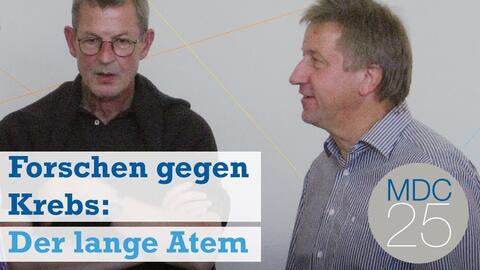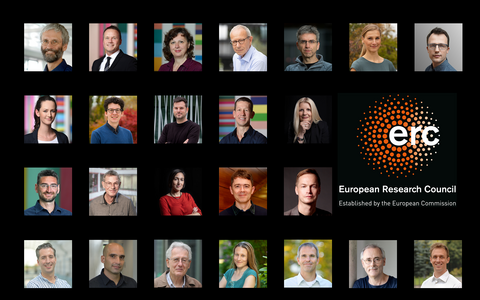
Success stories
Breaking down barriers in molecular medicine
ERC Grants: The most prestigious research grants in Europe
European Research Council (ERC) views the recipients of its highly sought-after funding as pioneers venturing into uncharted territory. The selection process for the grants is based on a single criterion – scientific excellence – and researchers are not constrained by any thematic or policy priorities. That's why receiving an ERC grant is a great honour and valuation of one's work.
Most of our researchers are biologists or chemists, while others are bioinformaticians, mathematicians, physicians, or physicists. For these experts, molecular medicine is about combining the different perspectives of physicians and scientists. Their findings should improve diagnoses and therapies, and help healthy people avoid getting ill

Examples of recent significant scientific discoveries
Noteworthy discoveries made by MDC research groups are featured in our Research Highlights.
Research leading to better therapy and diagnoses
Our scientists have founded a number of spin-offs. Furthermore, our researchers are making important contributions to the development of pharmaceuticals and technologies.
A steadily rising number of publications
The immediate result of a scientist's work are research papers which are published in scientific journals. These articles serve a central aspect of science: spreading knowledge across the world. Other researchers subsequently re-use and cite the results in their own work.
| Total | Number of publications in journals with impact factor > 10 | Average impact factor | |
|---|---|---|---|
| 2020 | 567 | 122 | 7,63 |
| 2019 | 449 | 84 | 7,57 |
| 2018 | 475 | 98 | 7.11 |
| 2017 | 448 | 98 | 7.47 |
| 2016 | 490 | 77 | 6.39 |
| 2015 | 432 | 68 | 6.32 |
| 2014 | 402 | 67 | 6.54 |
Calculations are based on publications of MDC research groups, guest groups, technology platforms and ECRC groups with a stated ECRC affiliation.
Some 65 percent of all publications were co-authored by researchers from other countries.





